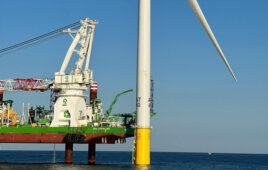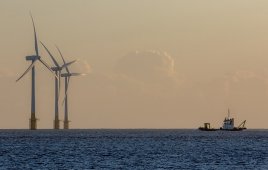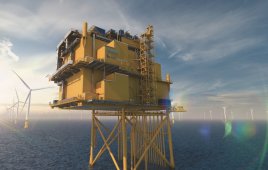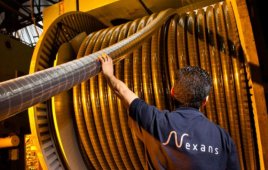Wind power repairs and downtime are more expensive than in conventional utility-grid systems. This makes reliable equipment especially important. Improving wind-power reliability is all about planning. Each system component is considered in terms of its total life-cycle cost–not just the price to buy and install. This applies to power-cable selection where a life-cycle cost model can assist in determining a wind farm’s return on a cable investment.
Variables include:
• Wind farm specifics
• Cable length and cost
• Installation cost
• Predicted cable life and failures
• Cost per failure
• Dielectric losses
• Discount rate and tax rate
When comparing life-cycle costs, it’s important to know that all cables are not created equal. For most power transmission and distribution needs, high-voltage or medium-voltage cables typically are specified. They are often installed underground or underwater (submarine) and connect the wind farm to the grid. Power cable components usually consist of several different materials, including cross-linked polyethylene (XLPE), ethylene propylene rubber (EPR), and water tree-retardant XLPE (TR-XLPE). However, not all cable materials deliver the same results. Hence, testing data and manufacturing standards are needed to predict performance. It is critical that wind developers are aware of how various materials perform in power-cable applications.
For instance, field studies over 30 years of use show that TR-XLPE cables from Dow exhibit little or no wear. This is due to jacketing and insulation materials resistant to moisture intrusion. Industry accepted tests estimate their lifespan at more than 40 years. This kind of performance is in line with wind-farm developers who are targeting a similar lifespan. Lab and field testing of cable components performed by independent institutes such as Georgia Tech’s National Electric Energy Testing Research and Applications Center (NEETRAC) also should be considered. Specifically recommended is the Cable Design Aging Test, NEETRAC project 97-409.
When considering cable materials, initial cost, dielectric losses, and predicted reliability can lead to significant economic differences for the wind farm owner and or utility over the lifetime of the cable. Factors that influence material selection include:
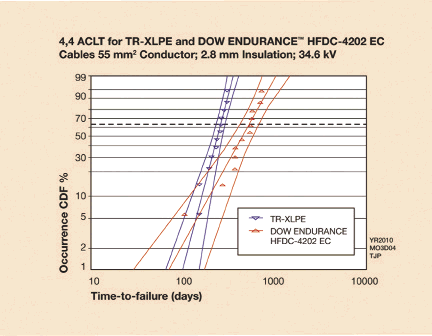
Water intrusion can negatively impact power cable performance or damage them beyond repair. Insulation and semiconductive shield materials may significantly slow water-tree growth. This is seen in cables aged in actual field conditions or under laboratory-aging conditions such as an Accelerated Water Treeing Test (AWTT). Testing protocols such as ICEA S-94-649 were established to distinguish XLPE and TR-XLPE insulation and semiconductive shield materials under accelerated aging conditions. The test above compares standard TR-XLPE to Dow’s next-generation TR-XLPE demonstrating improved performance.
• End user specifications
• Mechanical and environmental
stress resistance
• Ease of installation
• Results of electrical tests: accelerated
aging and dielectric performance
These factors also should be considered in developing cable standards for the wind industry. Just as industry specifications are written for utility applications, wind-energy specifications should also be established to improve consistency, performance, and reliability of wind-farm collectors. Investors, developers, independent power providers, utilities, equipment, cable and material suppliers, and others should collaborate to reach the energy goals that may soon find their way into legislation.
Until then, wind-farm developers should consider specifying cables that meet or exceed current power industry minimum standards. This will help ensure the use of durable materials, quality manufacturing processes, and high performance, which support and sustain system reliability. WPE
 By: Damien M. Polansky, North America Market Manager Dow Electrical & Telecommunications www.dow.com/electrical/market/wind.htm
By: Damien M. Polansky, North America Market Manager Dow Electrical & Telecommunications www.dow.com/electrical/market/wind.htm
Filed Under: Cables & connectors


